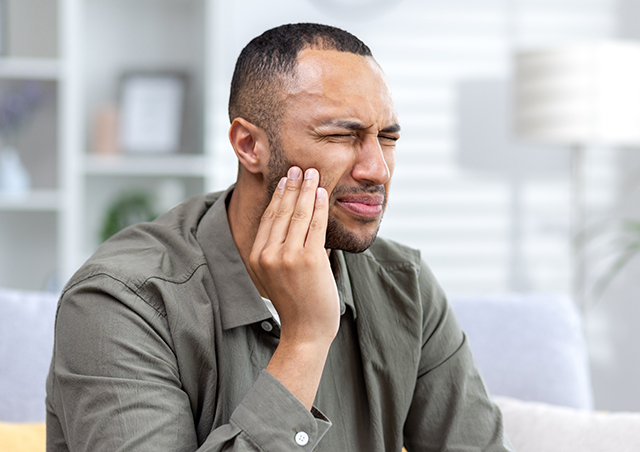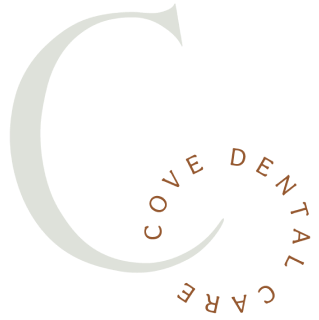
Relieving Jaw Pain and Discomfort in Greenville, SC
About TMJ Disorder
TMJ disorder (TMD) refers to various conditions affecting the temporomandibular joint, which connects the jawbone to the skull. Symptoms include pain, difficulty opening and closing the mouth, clicking sounds, locking of the jaw, headaches, and changes in bite. Causes include trauma, arthritis, teeth grinding or clenching, and stress.
TMJ disorder can be caused by a variety of factors, such as trauma, arthritis, grinding or clenching of the teeth, or stress.
Causes of TMJ
Many different things can contribute to developing a TMJ disorder. One of the most common things is grinding and clenching your teeth, also called bruxism. Doing this frequently strains your jaw joints and the muscles that help your jaw open and close. If you’re under a lot of stress, this becomes more prominent. Arthritis also contributes to breaking down the disc, which allows your jaw joint to move smoothly. Trauma or injury to the face or jaw can change the tracking of the jaw and how the bite comes together.
Typically, an uneven bite can cause TMJ disorders as well. If your bite isn’t coming together perfectly, the pressure isn’t distributed equally. The jaw joint isn’t moving smoothly, either. The longer your bite is uneven, the more worn down and irritated the jaw joint and muscles around it will get.
Correcting your bite with Invisalign or other solutions may be the best way to ensure the problem doesn’t get worse. Invisalign aligners move teeth using clear trays. The aligners must be worn at least 22 hours daily for the best results. Every smile is unique, so it is important to talk to a team member for individual treatment recommendations.
How to Treat TMJ
Patients with mild jaw pain and headaches due to TMJ disorders may react well to gentle treatment. Jaw and facial exercises, as well as therapeutic stress treatment, can reverse TMJ symptoms. Eating soft foods to rest the jaw or using a heating pack on the jaw may help patients with mild TMJ symptoms.
For patients with more moderate forms of TMJ, Dr. Carraway recommends nightguards. Similar to mouthguards, nightguards are customized aligners that protect the teeth. Nightguards keep the teeth from grinding together and wearing down the enamel. They also help position the jaw more comfortably to combat jaw pain. By wearing a nightguard to sleep, patients can stop the headaches, jaw pain, and tooth wear caused by TMJ disorders.
The History of TMJ Disorder
Early Observations and Limited Understanding
19th Century: Early Medical Insights
20th Century: Evolution of Diagnosis and Treatment
The 20th century marked significant progress in the understanding and treatment of TMJ disorder. Dentists and physicians began to collaborate to develop more accurate diagnostic methods and treatment approaches. The emergence of radiography and imaging techniques allowed for better visualization of the joint’s structure and function.
The mid-20th century saw the development of various treatment modalities, ranging from dental splints and exercises to more invasive interventions. However, the field was still grappling with incomplete knowledge of the underlying causes of TMJ disorder, and treatments varied widely in effectiveness.
Late 20th Century: Advances in Research
As medical and dental sciences advanced, researchers delved deeper into the mechanisms and causes of TMJ disorder. It became evident that various factors could contribute to the condition, including bite misalignment, muscle tension, stress, and anatomical abnormalities. This multifactorial understanding paved the way for more tailored treatment approaches.
Diagnostic tools, such as advanced imaging techniques and electromyography, enabled practitioners to better analyze jaw movement and muscle activity. These tools helped identify specific issues contributing to TMJ disorder and guided treatment decisions.
21st Century: Holistic Approach and Collaboration
In recent years, the approach to TMJ disorder has become more holistic, considering not only the physical aspects but also the psychological and emotional factors that can exacerbate symptoms. Collaboration between dentists, orthodontists, physical therapists, and mental health professionals has become integral to providing comprehensive care.
Advancements in technology have allowed for the development of more sophisticated treatment methods. Computer-aided design and 3D printing have led to the creation of custom-made oral appliances and orthotics that provide targeted relief and support for the jaw joint.
Ongoing Research and Education
As of the 21st century, ongoing research continues to refine our understanding of TMJ disorder. Scientific studies explore genetic predispositions, the role of inflammation, and the connection between TMJ issues and other systemic health conditions. The field benefits from interdisciplinary collaboration, incorporating insights from various medical and dental specialties.
Public awareness and education about TMJ disorder have increased, empowering individuals to recognize symptoms and seek appropriate care. The availability of online resources, support groups, and patient-centered organizations has contributed to a better-informed patient population.
